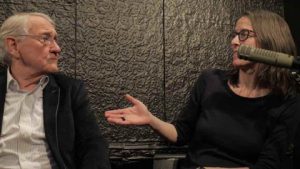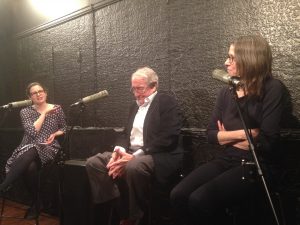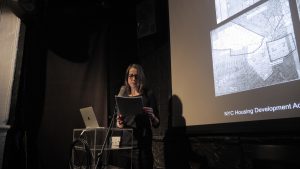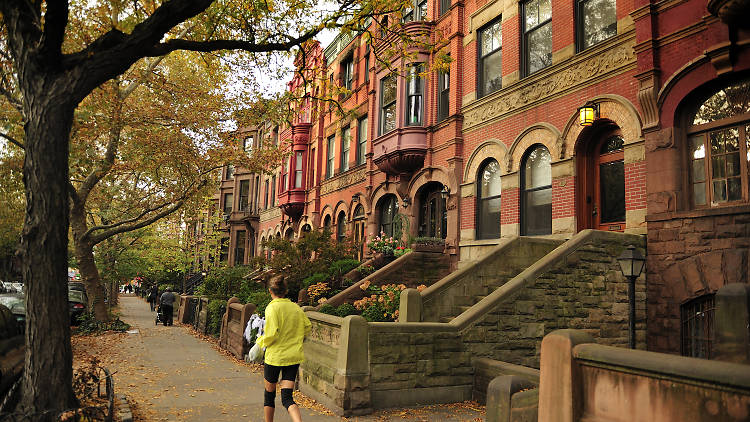
In the late 1960s, residents of Central Brooklyn joined a meeting about a new federal program, Model Cities. The meeting quickly soon The first community meeting in Central Brooklyn about a proposed new federal program, Model Cities, devolved into chaos and confusion. Community members invited to the meeting were skeptical about what they were hearing: A federal program had been launched, they were told, to address some of the problems facing the inner cities. Community participation was a key component of the program. Members of the community were asked to plan the programs and have a say in where the budget was allocated. Yet these members of the community were wary after years of government missteps and neglect. During the meeting, several stood up to demand an explanation, saying that they had had harmful experiences with city programs before and did not see how this one would be different. The central question underlying several of their statements seemed to be–How should we believe you? As one community member asked, “Can any government program be taken seriously by the people who live in the slums of our cities?” To these community members, the premise of Model Cities seemed too good to be true—A wariness that turned out to be correct, especially after looking at the disappointing end results of the program when it concluded in 1974.
This scene at the Central Brooklyn community meeting is part of Gordon Hyatt’s never-before-seen 1970 documentary about the Model Cities program, “Between the Word and the Deed,” that was screened at UnionDocs on March 15 for the Urban Democracy Lab-sponsored event, What is the Model City? Speakers Susanne Schindler and Urban Democracy Lab’s Rebecca Amato gave important context to the broader historical and political trends of the Model Cities program and led an audience Q&A with the documentary filmmaker, Gordon Hyatt. His film, “Between the Word and the Deed,” was one of the films the NYC government sponsored to promote the changes they were making in the 20th century, but was anything but propaganda. Instead, the film exposed some of tensions that arose during the Model Cities program between the city government and the community. Capturing both community meetings and city government brainstorming sessions and flitting between Central Brooklyn and the downtown Manhattan town hall, the documentarians instead showed a program that was rife with conflict and imperfections as it was carried out.

Susanne Schindler, an architect, writer, and former professor at Columbia, gave more background about the Model Cities program. Model Cities was launched in the 1960s as part of Lyndon Johnson’s “Great Society program” and functioned partly as a remedy to the shortcomings of urban renewal, which caused mass displacement and hurt many African American communities who had largely been excluded from post-war prosperity, leading to urban unrest. Model Cities, in contrast to urban renewal, was not a construction project centered around new housing developments. Instead, it was meant to be a more holistic development project, enfolding health, education, job opportunities, and new housing projects into its domain. Crucially, Model Cities was meant to be participatory for the communities where it was carried out, relying on community involvement to decide how the money was spent. “Between the Word and the Deed” revealed some of the conflicts and ironies that arose from the city’s supposed commitment to community participation in three New York City neighborhoods: the South Bronx, Central Brooklyn, and Harlem-East Harlem. The legacy of the Model Cities program raises several questions that continue to be pressing today: What are the promises, and tensions, inherent in participatory development? Who is the “community”? Who, for example, can represent a community like Central Brooklyn, which in the 1970s housed tens of thousands of people broken into large class and ethnic divisions? The South Bronx and Harlem-East Harlem neighborhoods were never able to deliver a solidified plan to the city due to the variations and tensions between different communities within the neighborhood. With these shortcomings and obstacles in mind, was Model Cities a stroke of genius, heralding new decades of urban community participation, or was it destined to fail?

The promise of Model Cities was laid out by a city government representative in the documentary: “This is not a program calling for total community control or total city control,” he explained, “It is in fact a brand new partnership. It will for the first time give the residents of these areas a voice in the delivery of these services.” By making the distinction, the government official was steering the project away from the rhetoric of community control, a movement that was gaining ground during the time period. While Model Cities invited community participation, the community members were expected to work within the boundaries of the city government bureaucracy, and were not expected to have complete control of the funding by any means. This would ultimately be a crushing limitation, when several of the city agencies failed to carry out the community’s plans.
While the Model Cities program did result in a few small programs and new housing developments, the citizens’ disenchantment with the political arena and wariness of the city government proved justified. After years of not being able to participate in the decision-making process, their participation did not lead to the desired results: They couldn’t get the city agencies to react to the neighborhood demands. Ending in 1974, Model Cities both led the way in demonstrating that a development program could involve the participation and voice of the community, and also showed how such a program could break down. These lessons still hold relevance for urban policy-makers today, who seek to incorporate community participation in their plans. The flaws and limitations of Model Cities resonate through the decades and manifest into age-old questions: What does a democratic city planning program look like, and how can it be brought into being?

